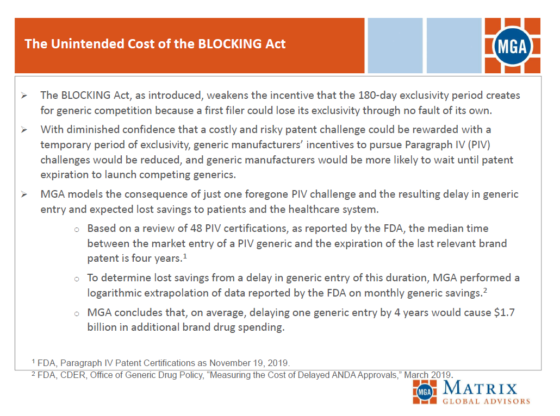By Serra J. Schlanger —
On December 18, 2019, the Department of Health and Human Services (HHS) and the Food and Drug Administration (FDA) issued a Notice of Proposed Rulemaking (NPRM) and a Draft Guidance for the importation of certain prescription drugs. The NPRM and Draft Guidance provide further details for the two pathways initially described in the Safe Importation Action Plan that was announced in July 2019 (see our coverage here). The NPRM describes “Pathway 1” which will allow for the importation of certain prescription drugs from Canada. The Draft Guidance sets forth “Pathway 2” which will allow manufacturers to import FDA-approved prescription drugs that were originally manufactured and intended to be marketed for sale in a foreign country.
I. Overview of the NPRM
Section 804 of the Federal Food, Drug, and Cosmetic Act (FDC Act), 21 U.S.C. § 384, allows HHS to promulgate regulations that allow for the importation of certain FDA-approved prescription drugs from Canada. However, Congress conditioned the implementation of § 804 on a certification by the Secretary of HHS that implementation (1) will pose no additional risk to public health and safety and (2) will result in a significant reduction in the cost of drugs to the American consumer. Since the current version of § 804 became effective in 2003, no HHS Secretary has made such a certification. The NPRM states that the HHS Secretary intends to make this certification when the final rule is issued. The certification will be conditioned on each authorized Section 804 Importation Programs (SIP) meeting the requirements of § 804 and the final rule. The NPRM explains that the rule is not severable; if any provision in the rule becomes invalid, the entire rule will become invalid and the Secretary’s certification will be null and void.
The NPRM sets forth a potential pathway to implement FDC Act § 804(b)–(h), for a State, tribal, or territorial government entity (SIP Sponsor) to import certain prescription drugs from Canada through time limited SIPs. The NPRM proposes to approve SIPs for two years, with the possibility of extensions for additional two year periods. HHS proposes that every SIP be sponsored by a State, tribal, or territorial government entity, with possible co-sponsorship by a pharmacist, wholesaler, or another State or non-federal government entity. The NPRM says that FDA is specifically seeking comments about whether the definition of a SIP Sponsor should be expanded to allow for a pharmacy, wholesaler, or pharmacist to sponsor a SIP without a State, tribal or territorial government co-sponsor.
A SIP Sponsor will need to submit a SIP proposal to FDA for review and authorization. In the proposal, the SIP Sponsor must identify a foreign seller (licensed by Health Canada as a wholesaler and registered with FDA as a foreign seller) that will purchase eligible prescription drugs directly from the manufacturer, and an importer (a licensed wholesaler or pharmacist) in the United States that will buy the drugs directly from the foreign seller. In order to be eligible for importation, the drug must be approved by Health Canada’s Health Products and Food Branch and, other than the labeling, also meet the conditions in an FDA-approved new drug application (NDA) or abbreviated new drug application (ANDA). Controlled substances, biological products, infused drugs (including peritoneal dialysis solutions), intravenously injected drugs, drugs inhaled during surgery, intrathecally or intraocularly injected drugs, and drugs subject to Risk Evaluation and Management Strategies (REMS) are excluded from potential importation.
The SIP proposal must show that importation will pose no additional risk to the public’s health and safety and will result in a significant reduction in cost to the American consumer for the prescription drug that the SIP Sponsor seeks to import. The cost savings explanation will be reviewed by another, still-to-be identified, component of HHS. FDA may elect not to authorize a SIP proposal if, for example, there are potential safety concerns, there is relatively low likelihood that the program would result in significant cost savings, or FDA needs to limit the number of authorized programs to effectively monitor the program.
The NPRM sets forth the requirements for importing eligible prescription drugs if FDA approves a SIP proposal. The importer must submit a Pre-Import Request to FDA at least 30 days prior to the scheduled date of entry; the request must include a testing plan describing how the imported drugs will be tested for authenticity, degradation, and compliance with established specifications and standards. This testing may be performed by the manufacturer or the importer, but must be completed at a qualifying laboratory in the United States. Shipments of imported drugs will be limited to certain ports of entry authorized by FDA. The drugs can either be admitted to a foreign trade zone for entry into the United States once the product is in compliance with the FDC Act, or the importer can file an entry for consumption and request to recondition to bring the drugs into compliance with the FDC Act. Before the drug can be sold in the United States, the FDA must review and find the testing results acceptable, and the product must meet FDC Act labeling requirements. The NPRM proposes that a drug imported under a SIP will need a new National Drug Code (NDC) and will need to be listed. The NPRM also proposes that the labeling on or within the imported drug’s package include the statement: “This drug was imported from Canada under the [Name of State or Other Governmental Entity and of Its Co-Sponsors, If Any] Section 804 Importation Program to reduce its cost to the American consumer.”
The NPRM includes a number of other requirements for drugs imported under a SIP. Most products imported under a SIP must comply with the Drug Supply Chain Security Act (DSCSA), however, the NPRM exempts certain transactions from the DSCSA requirements. The importer will be responsible for receiving and reporting adverse events, medication errors, field alerts, and other reports to the drug manufacturer and FDA. Among other things, the SIP Sponsor will need to comply with post-importation requirements, including providing FDA with data and information about the SIP, including the SIP’s cost savings to American consumers.
II. Overview of the Draft Guidance
The Draft Guidance sets forth a potential pathway manufacturers may use to import FDA-approved prescription drugs that were originally manufactured and intended to be marketed for sale in a foreign country, referred to as “multi-market approved products” or “MMA products”. The Draft Guidance explains FDA’s recommended procedures for manufacturers to obtain an additional NDC for MMA products; for submitting documentation to demonstrate that the MMA products are FDA-approved drugs that meet the specifications of the products’ NDA or biologics license application (BLA); and the recommended labeling changes for the MMA products. Drugs offered under an ANDA are not eligible for importation under the Draft Guidance.
Under FDC Act § 801(d)(1)(B), 21 U.S.C. § 381(d)(1)(B), a prescription drug manufactured outside of the United States may only be imported into the United States for commercial use if the manufacturer has authorized and labeled the drug to be marketed in the United States. As such, manufacturers that wish to take advantage of this pathway will need to authorize the importation these products. The MMA products must be accompanied by the FDA-approved labeling. To avoid confusion between product packages, and so pharmacists can distinguish the MMA product, the Draft Guidance suggests that manufacturers add a statement to differentiate the MMA product on the product container and outside package.
The Draft Guidance explains that a manufacturer must obtain marketing approval from FDA through the submission of an NDA or BLA supplement. The supplement should include information to demonstrate that the MMA product is the FDA-approved product and is manufactured in accordance with the FDA-approved NDA or BLA. Among other things, the information in the supplement should demonstrate that the MMA product meets all of the chemistry, manufacturing, and controls specifications in the NDA or BLA. Manufacturers are also encouraged to submit an attestation stating that the MMA product conforms to the information described in the approved application regarding the quality of drug substances, drug products, intermediates, raw materials, reagents, components, in-process materials, container closure systems, and other materials used in the production of the product. The supplement should also include executed batch records for the product to be imported.
Manufacturers that import MMA products must comply with the DSCSA requirements for product identification, tracing, and verification. To help identify these products, FDA proposes to add a new “multi-market approved products” marketing category to the registration and listing system. The Draft Guidance also suggests that manufacturers submit import entries to help FDA verify that the manufacturer has authorized and labeled the MMA product to be marketed in the United States.
In the Federal Register Notice of Availability for the Draft Guidance, FDA specifically asks for comments on a number of questions, including whether generic drug manufacturers would be interested in a similar importation pathway. FDA is also interested in understanding how this proposal will impact the development and market entry of generic drug and biosimilar products.
* * *
The issuance of the NPRM and Draft Guidance indicate that the federal government has taken steps to allow for the importation of drug products. However, the potential utility and impact of the two proposed pathways it is still uncertain. Although the NPRM states that the Secretary of HHS will make the certification required under FDC Act § 804 when the final rule is issued, it is still unclear whether any SIPs will be able to satisfy the requirement that the importation of prescription drugs results in a “significant reduction in the cost of covered products to the American consumer.” It is also unclear whether any manufacturers will seek to use Pathway 2.
Comments on the Draft Guidance will be accepted until February 21, 2020. Comments on the NPRM will be accepted until March 9, 2020. We will continue to monitor and report on federal and state efforts to address drug pricing issues.











